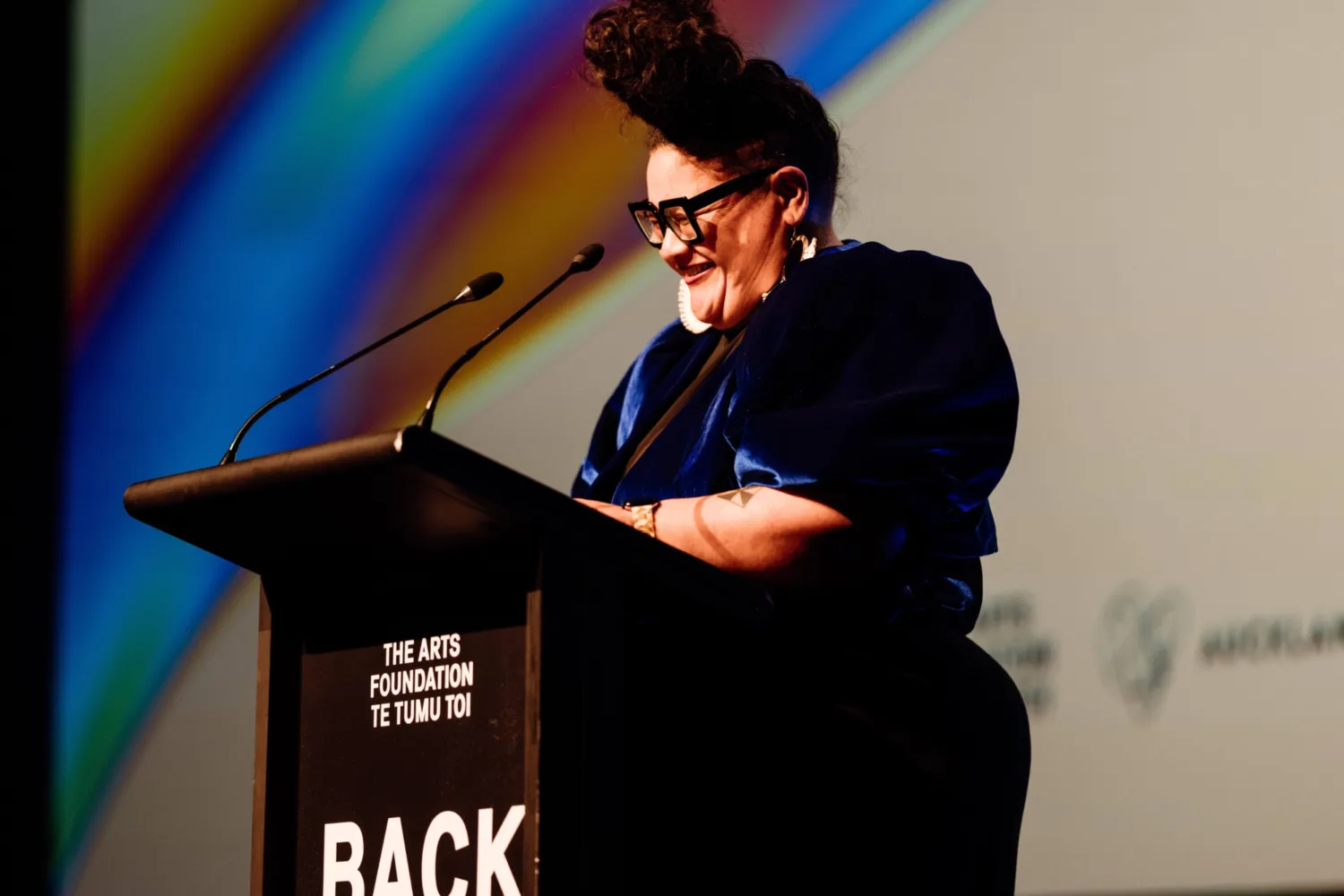Meet Jessica Palalagi

As general manager - kaiwhakahaere matua - of the Arts Foundation Te Temu Toi, Jessica's role is to spearhead the vision that the arts are essential to a vibrant Aotearoa.
Jessica Palalagi, General Manager, The Arts Foundation Te Temu Toi
What’s your connection with The Symphony Centre development?
The Symphony Centre, via RCP, is a major partner of The Arts Foundation Te Temu Toi. While The Symphony Centre will significantly contribute to the physical transformation of the Aotea Arts Quarter, we also recognize the countless transformative art experiences that have taken place in this very space over the years. Many of the talented artists and creatives involved in those experiences are part of our robust alumni network, which we’ve proudly celebrated for over 24 years, consisting of more than 200 individuals.
Tell us about your background.
I grew up in Onehunga, Tāmaki, right by the bay with both sides of my family all around me, my Niuean grandparents lived at the end of my street and my English/Scottish grandparents a 5 minute drive away.
I completed an MA in Art History at the University of Auckland and then swiftly left for the UK, living in London for 16 years. I returned with ‘brain gain’ at the end of 2020 and have been living in Tāmaki since then.
Can you tell us about Aotea Arts Quarter’s significance to the Arts Sector?
There are physical manifestations of art all through the quarter itself - the Waharoa by the great Selwyn Muru, the many artworks inside the Aotea Centre, and I think we can still feel the ephemera of the years of performances either at the Kiri te Kanawa Theatre, or the Town Hall, or even in the centre of the square - Aotea Arts Quarter has been a focal point for some of the greatest art experiences we have had in Tāmaki Auckland both from a national and international perspective.
Art and creativity is a huge connector – both as a vessel for storytelling but also as a way of experiencing the intangible.
How does art foster community engagement and participation in urban areas?
Art and creativity is a huge connector – both as a vessel for storytelling but also as a way of experiencing the intangible. It has the ability to bring us together, to challenge us, it can hold messages that can be confronting but also joyous and hopeful.
In what ways does art contribute to the cultural identity and diversity of a city?
I think of it as being like a wheke (octopus) with many tentacles, reaching out into communities, bringing people together – holding space for all. It can be expansive and experiential, constantly innovating and rebirthing – reflect the ever-changing nature of our city
How do you see the future of Aotea Arts Quarter?
Full of life again. Energetic with people, noisy with music in the square, comings and goings from the buildings - a collection of happenings that make it vibrant, colourful, lush epicentre of the city.
What makes The Symphony Centre development project compelling to Tāmaki Makaurau?
We need it - a compelling vision for a new future in that part of the city. By creating vibrant, welcoming areas where people can gather, connect, and express themselves, we can foster a sense of community and spark creativity - that's exactly what well-designed built environment spaces can achieve. These spaces have the power to transform not just the physical setting but also the social dynamics, bringing forth a renewed spirit of connection and urban living.
What is your vision for the future of Tāmaki Makaurau?
More connected, more art, and more of a reflection of the stories it has held across generations - encompassing the wisdom and traditions of mana whenua to the diverse experiences of the communities that inhabit it today—this place serves as a vibrant tapestry of cultural storytelling, celebrating the past while embracing the present.
Describe The Symphony Centre development in 5 words.
People led, future focused (only needed 4)
